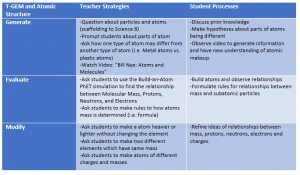- Speculate on how such networked communities could be embedded in the design of authentic learning experiences in a math or science classroom setting or at home. Elaborate with an illustrative example of an activity, taking care to consider the off-line activities as well.
I found this week’s readings to be informative and applicable, especially when viewed through the lens of an inner-city school. I am specifically interested in Exploratorium, a museum in San Francisco. Their intention is to diffuse knowledge through their exhibits through an on-line option, that provides an extension of what you would experience in the museum. I like the fact that students can experience the museum from home or school. One of the apps listed on their website is called ‘Science Journal’. This app simulates a laboratory, which supports students as they document their observations through an experiment, however it is only available for android phones. Students can gather data, measure light, sound, and acceleration. The Exploratorium created companion activities for the app.
The Exploratorium websites shares that for “most students, science is still defined by textbook chapter assignments on Monday and vocabulary quizzes on Friday. Regrettably, students experience science in an interactive way in perhaps less than 10 percent of science classrooms. The Exploratorium is working to change that” (Exploratorium). In the design of an authentic learning experience in a science classroom, Exploratorium could be used to support inquiry. The website hosts many experiments, multimedia videos, and resources for students. “Inquiry is central to science learning. When engaging in inquiry, students describe objects and events, ask questions, construct explanations, test those explanations against current scientific knowledge, and communicate their ideas to others” (National Research Council, 1996, p. 2). In a school where field trip funds are minimal, teachers could use this website to support inquiry by creating an environment that supports construction of knowledge through hands-on experiments and activities. “Museums provide ideal environments for learning and practicing inquiry skills. While playing with exhibits, students on field trips can try various experiments, make observations, and have memorable experiences” Gutwill, J. P., & Allen, S. (2011). This can be mirrored in the classroom by giving students opportunities to experiment, document their observations, and provide stations for rotation with social interaction. “The role of the authority figure has two important components. The first is to introduce new ideas or cultural tools where necessary and to provide the support and guidance for students to make sense of these for themselves” (Driver et al., 1994). Technology can be incorporated to access the appropriate apps, and then share their learning through ePortfolios. I believe that there is significant value in authentic field trips that provide students with new opportunities to make connections, build communication competencies, and experience new learning environments with resources (Gutwill & Allen, 2012). However, if classes are unable to attend more than one or two per school year because of lack of funds, I think virtual field trips are a great alternative. Spicer & Stratford (2001) support this statement and explain that virtual field trips should not replace authentic fieldtrips. What Exploritorium can do is provide scaffolding prior to a field trip, which could be an example of LfU, supporting motivation, knowledge construction, and refinement for both pre and post trip.
References:
Driver, R., Asoko, H., Leach, J., Mortimer, E., & Scott, P. (1994). Constructing scientific knowledge in the classroom. Reconsidering Science Learning,23(7), 5-12. doi:10.4324/9780203464021_chapter_2.2
Gutwill, J. P., and S. Allen. 2012. Deepening students’ scientific inquiry skills during a science museum field trip. The Journal of the Learning Sciences 21 (1): 130–181.
Spicer, J., & Stratford, J. (2001). Student perceptions of a virtual field trip to replace a real field trip. Journal of Computer Assisted Learning, 17, 345-354.
